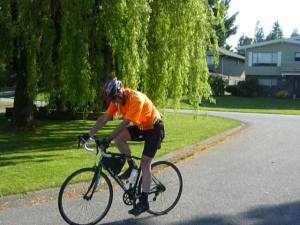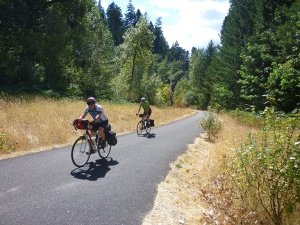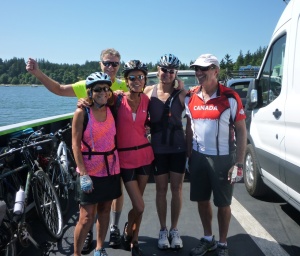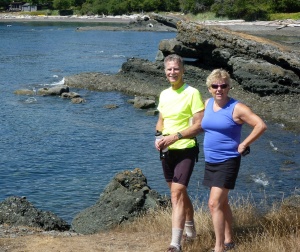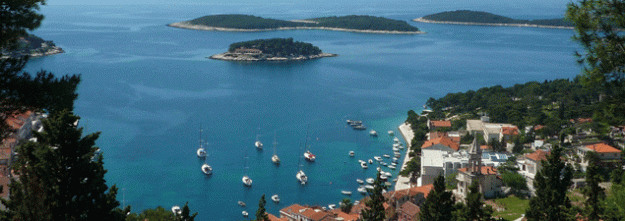Day 1: Our jet-lagged party of six was greeted by our friendly guide Nam upon landing at Hanoi airport in Vietnam and we felt instantly in good hands. On our trip from the airport to the Authentic Hanoi Hotel, my first thought was “where is the sun”?. The hazy sky of Hanoi seemed a combination of exhaust, smoke, and humidity, and it was hard to pinpoint where the sun actually resided.
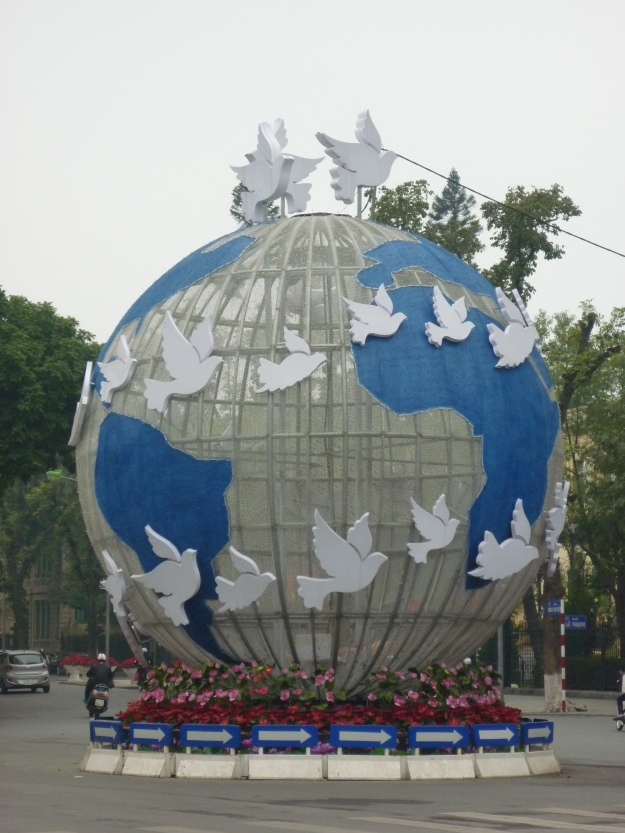
A roundabout near our hotel
Hanoi is a crazy chaotic city with an astonishing number of small cars, trucks, scooters, bikes, pedal cabs and people that drive, walk, cycle and park in whatever direction they want, on the roads and sidewalks. The majority of vehicles are scooters, which carry up to four people, and are often used to carry huge loads including fish traps, produce, poultry, eggs, and building supplies. Whole families with the dad in front, mom in back, and two small children sandwiched between them are seen everywhere. Most intersections are uncontrolled and the infrequent traffic lights are largely ignored. There is a constant cacophony of honking, and weaving going on, but there’s a certain rhythm to it all that works. Paul summed up the rules of the road as “Everyone has the right of way; just don’t hit anyone.” Road rage seems nonexistent. But more than half the scooter riders wear face masks to filter out the fumes.

Intrepid pedestrians
Crossing a busy road for the first time was a life-altering experience. Traffic will never stop for pedestrians, even at a crosswalk. Our guide Nam instructed us to raise a hand, move into the fray (and pray), walk slowly but steadily, make no sudden moves, and weave in between the traffic. The ‘raise your hand’ step didn’t seem to be used by the locals, but perhaps helped the locals recognize us as tourists and make some allowances for us. The method of give and take, ebb and flow, seems to work. Nam shared with us a story of his friend who got a ticket from the local police for not stopping at a traffic light. The police asked him “Did you see the light” and he said “Yes’. The policeman then asked” So why didn’t you stop” and he said “because I didn’t see you”. Wrong answer, followed by pretty large fine.
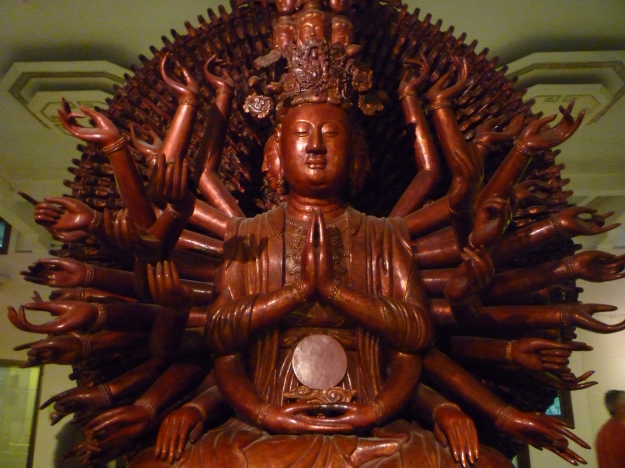
The 1000-eyed Buddha might have foiled the pickpocket
I wasn’t paying attention on the first day while walking in a crowded tourist area in the Old Quarter, around Hoan Kiem Lake, one hour into our first outing, and had my wallet stolen from my purse. Cancelled the cards quickly, but lost some cash. Took a day to shake off the funk, but it was a reasonably inexpensive lesson. After several tips with my bag zippers pinned together, I had grown careless.
Dinner out at a nice restaurant with nearby croaking frogs. Great spring rolls, beer passable.
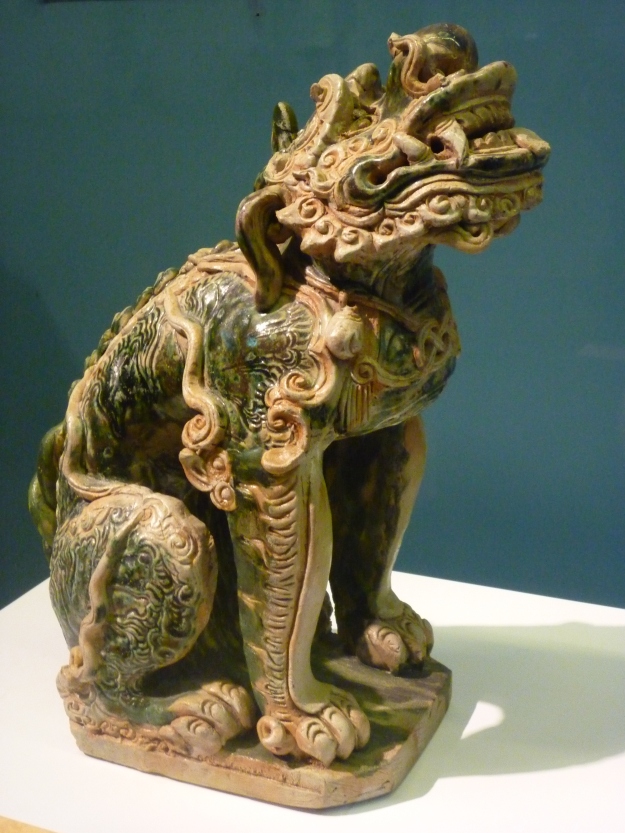
The sacred unicorn
Day 2: We also had the second day on our own, so we visited the Museum of Natural History, where we discovered the four most important sacred animals for the Vietnamese – the phoenix, unicorn, turtle and dragon. Of these, only the turtle closely resembles the western concept. We now had our “Hanoi legs”: using bottled water, finding our way around the restaurants and local shops, figuring out the money (15,000 Dong = 1 Canadian dollar) and how the ATMs work, and returning to the correct hotel at the end of the day. Still, we kept forgetting to watch for mopeds traveling counterflow on both sides of the street, and seriously doubted our sanity when we contemplated a city tour by bicycle the following day.

About one ATM in five honoured our cards
We failed to notice that the Temple of Literature was on tomorrow’s tour agenda, and spent a couple of hours marveling at this centuries-old university.
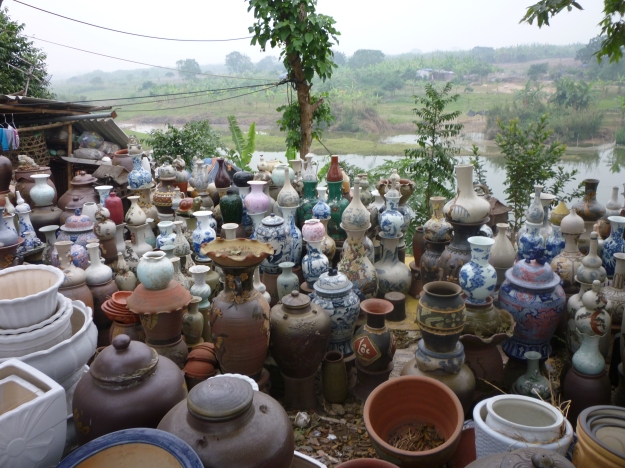
At the outskirts of Hanoi
Day 3: Our single day of cycling in Hanoi consisted of a visit to crowded cemeteries and rural pottery plants, the Ho Chi Minh Mausoleum (closed Mondays and Fridays, unfortunately for us), the Ethnology Museum, the One Pillar Pagoda, and the Citadel. As with almost every meal on this tour, we enjoyed a copious set-menu lunch at a nicely appointed restaurant revealed to us by our guide. Still enjoying the spring rolls.
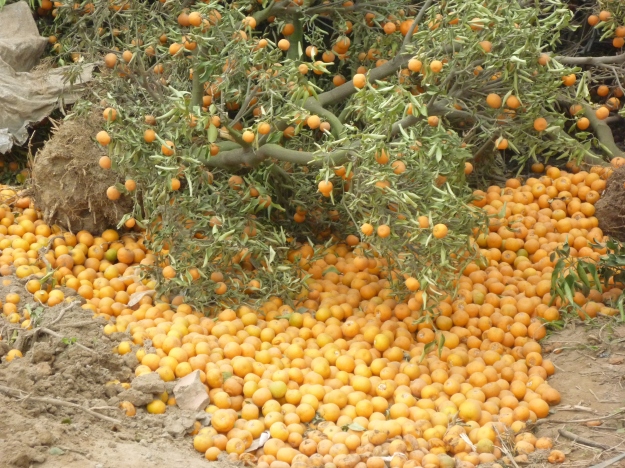
Excess kumquats
After our first and only day of cycling 30 kms within Hanoi, at the end of the day were amazed at how well we had done in the traffic, without feeling the panic we would have felt doing the same at home. The relatively slow pace of the cars/scooter/bikes probably made this workable. Speeds ranged from 10 kph for the latter to 30 for the former. We finished the day with a colourful water puppet show just a block from the spot I last saw my wallet.

Nam, our guide for the North
We especially enjoyed the personal stories told us by Nam: how he’d helped a friend dig up his ancestor after three years in an overcrowded cemetery so his bones could be reburied more compactly; how he’d paid for his condo with a backpack full of Vietnamese cash (worth about US$ 38,000) delivered by scooter; how he’d paid his bride’s parents about one percent of that for the ”bride price,” and a bargain at any price. Friends of Nam’s, faced with a bride price financially out of reach, did an end run around the parents by getting in the family way.
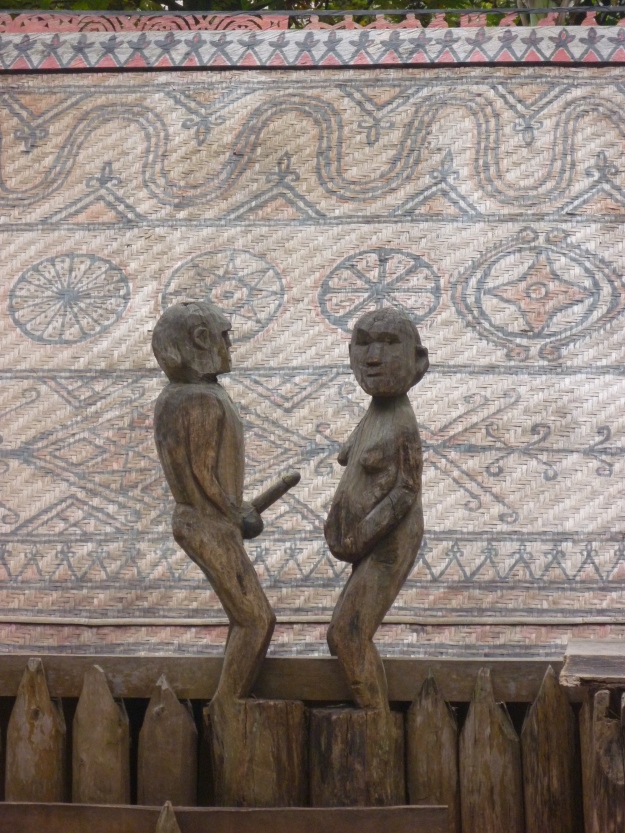
At the Museum of Ethnology (Objects not to scale)
We were most fascinated by the Ethnology Museum, where we learned a little about some of Vietnam’s many ethnic groups, some male-dominated, others ruled by the women. We would run into several of these groups during our rural cycling in the days to come. We tried out some of the houses on stilts, not unlike one we would later spend a night in. We fell asleep dreaming of the quiet country roads we hoped were in our future.

Several ethnic minorities live on stilts
For more information:
- Hanoi traffic (video)
- Lac Viet – our tour operator
- Biketours.com – the US company that did all the arangements
Related posts:
- Next part: Cycling in Vietnam – The North outside Hanoi
- Going Nomad
- Cycling in the southern Dalmatian Islands
- Avoiding Travel Scams without Avoiding Travel
- Why Travel Alone?
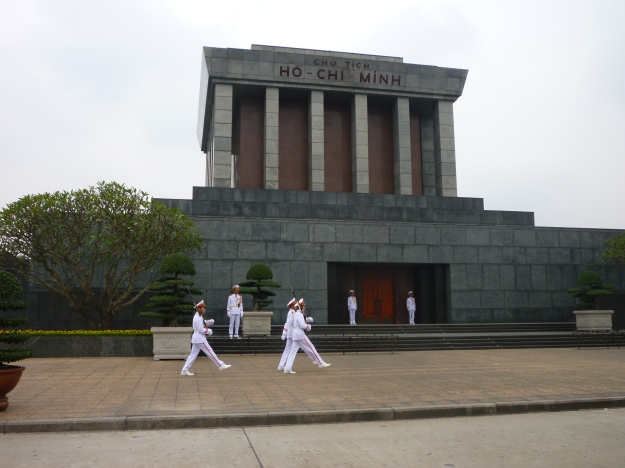
Changing of Ho Chi Minh’s guard


